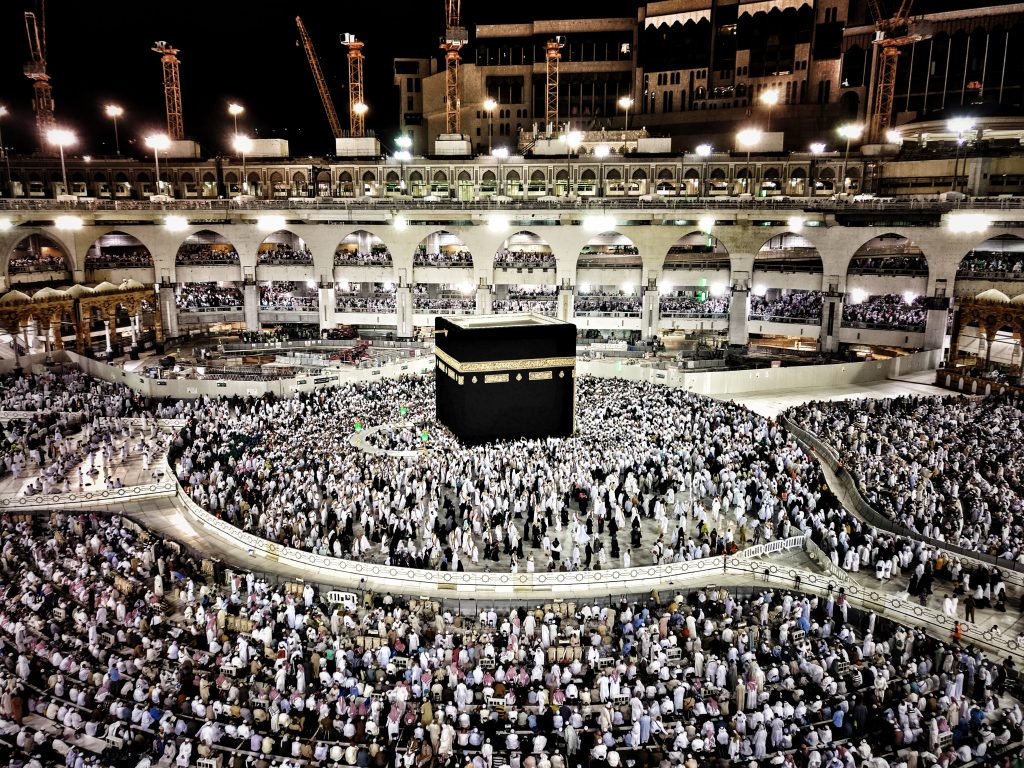The Kaaba
A Brief History

The Holy Kaaba is likely the most significant religious building across faiths, world over. Though the building is not large in size, its stature, significance and mere presence transcend the limitations of emotion and feeling. The Kaaba, considered the House of God in the Islamic faith, wasn’t always the building toward which the Muslim people faced for prayers five times a day. Below, you will learn a little about the Kaaba’s past and how it came to be what it is today.
Kaaba, meaning ‘cube’ in Arabic, may look perfectly cube-shaped, but the actual structure is slightly taller than it is wide and the adjacent sides have marginally varying dimensions; the structure is approx. 15m tall, with the sides at 10.5 x 12m. The area around the Kaaba is ever-evolving to help accommodate the growing number of people that visit the location every year to perform their pilgrimages. However, the Kaaba itself has also undergone some changes over its lifetime as well.
It is widely believed that the location of the Kaaba has been a spiritual sanctuary since the time the first humans appeared on Earth. The actual rudimentary building was built by Hazrat Ibrahim (AS) and his son, Hazrat Ismail (AS); it was built because of a dream in which the angel, Hazrat Jibrail (AS) appeared to Hazrat Ibrahim (AS) and told him that it was the will of God. The initial building was just a four walled structure with no roof. The angel was said to have brought the Black Stone that was fitted to the eastern corner of the structure.
Later, the structure was improved upon by the Quraysh tribe. The Quraysh used wood and masonry to rebuild the Kaaba, while adding a door that was slightly raised to protect the building from floods and intruders. The Kaaba was rebuilt many times as the years passed in order to keep up with maintenance; the Black Stone remained where it was placed even in the new structures.
Though originally built as a sanctuary and place of worship for monotheistic religions, the area around the Kaaba became a settlement for pagans who worshiped idols. These idols were placed inside the Kaaba, and the building became a sanctuary for these faiths with multiple deities.
During the lifetime of the Holy Prophet (SAW), muslims prayed facing Jerusalem rather than the Kaaba, until the direction was changed after the revelation of Surah Al-Baqarah. The Holy Prophet (SAW) was also the one who had the idols and paintings removed from the Kaaba to restore it to it’s monotheistic state.
Over the course of history, the Kaaba has been restored and rebuilt many times. Today, the structure is covered with a black cloth that is embroidered with thread encased in gold. The building is fitted with a solid gold door, and the black stone remains fitted in the eastern corner.


